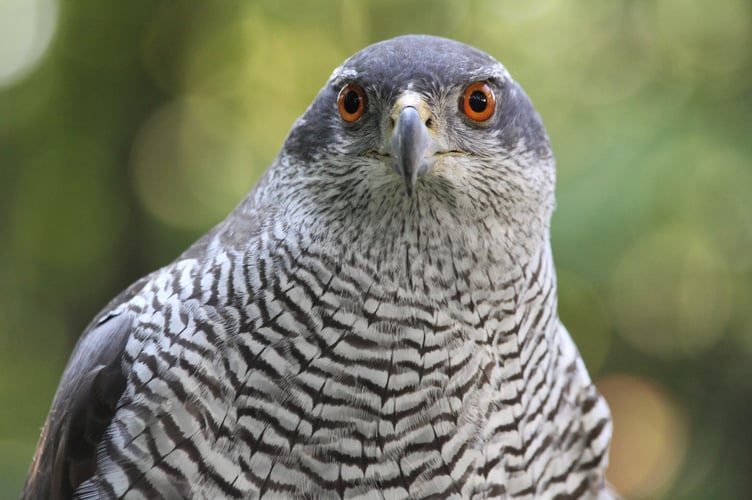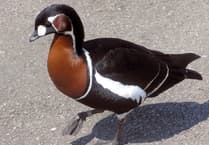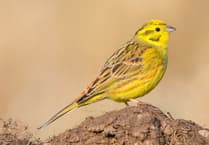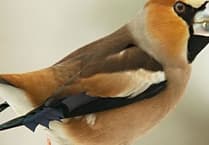Even in the cold and grey depths of February, there are early signs of spring arriving at Tice’s Meadow.
With daylight hours increasing and snowdrops flowering, Great Spotted Woodpeckers are drumming out their territories and crows have been seen nest building.
But the prospect of bigger birds arriving has really excited twitchers in these dark-ish times. For the avid birders of Tice’s have been lining up their telescopes at the summit of Crooksbury Hill in the hope of seeing the display flights of Goshawks.
The Goshawk is the Ryan Gosling of its kind. It’s the largest of European hawks, and an exceptionally handsome bird. But they can be easily overlooked and are very nervous in the presence of humans, whom they attempt to avoid.
Historically they are very rare and may have become extinct as a breeding species in the UK in the late 1800s.
Their fortunes started changing around 70 years ago as sightings increased from the 1960s onwards.
This may be down to escapees or deliberately released birds, with the BTO now estimating there are 620 breeding pairs in the UK.
Returning to the display flights, they usually occur above the canopy of a wood and consist of an undulating flight, similar to that of a wood pigeon, but with sharper turns and descents and sometimes embellished by sky-dives that can cover over 600 feet.
These displays are frequently concluded by the male bringing a prepared fresh prey for the female’s delectation. This is a wise precaution as males have often been injured or killed by the larger females during courtship. Clearly, the female of the species is definitely more deadly than the male in this case.
The usual prey are corvids, pigeons and squirrels for this amazing aerial killer. They have been dubbed the phantom of the woods or “avian cruise missiles”.
They usually hunt from a perch and use thick vegetation to block the prey’s view. They also adjust their flight level while hunting flying birds so the prey is unable to see the hunter.
Despite having a wingspan of more than one metre the hawk is capable of twisting and turning in flight to avoid branches, while sustaining speeds of up to 38mph.
When the parents have two or three hungry youngsters to feed, the fledglings of other birds are easy pickings and are frequently taken.
Keeping on the theme of goshawks and bigger birds, I have some positive news to report about developments in Dorset
In 2023 Ospreys successfully reared three chicks in Poole harbour, the first to hatch in the south of England for over 200 years. Two left the nest and migrated to Africa, the third ended as lunch for some goshawk chicks.
As an aside, I can recommend the boat trips around Poole Harbour as an interesting trip any time of the year, but particularly during spring and summer when Ospreys are present, as are a pair of White Tailed Sea Eagles.
All details can be found on www.birdsofpooleharbour.co.uk.








